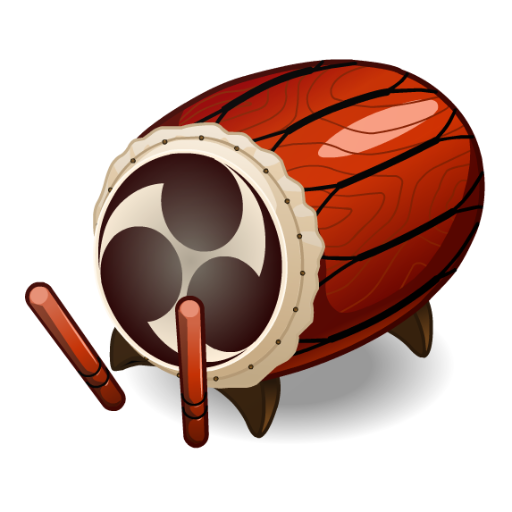Taiko
Taiko (太鼓) drums represent a diverse array of Japanese percussion instruments. In Japan, the term "taiko" encompasses any type of drum, but internationally, it specifically refers to the traditional Japanese drums known as wadaiko (和太鼓, "Japanese drums") and the ensemble drumming style called kumi-daiko (組太鼓, "set of drums"). The craftsmanship involved in creating taiko varies widely among manufacturers, with the drum body and skin preparation potentially taking several years, depending on the techniques employed.
According to Japanese folklore, taiko drums have a mythological origin. Historical evidence, however, indicates that taiko were introduced to Japan from Korea and China as early as the 6th century CE. Some taiko drums bear similarities to instruments from India. Archaeological findings further confirm the presence of taiko in Japan during the Kofun period of the 6th century. Over the centuries, taiko drums have served multiple purposes, including communication, military signaling, theatrical accompaniment, religious ceremonies, and both festival and concert performances. In contemporary times, taiko have also become integral to social movements advocating for minority rights, both in Japan and globally.
The kumi-daiko performance style, which features an ensemble playing on various drums, was pioneered by Daihachi Oguchi in 1951 and has been carried forward by groups like Kodo. Other regional styles, such as hachijō-daiko, have also developed within specific communities in Japan. Kumi-daiko groups are not only active in Japan but also in countries such as the United States, Australia, Canada, Europe, Taiwan, and Brazil. A taiko performance encompasses a range of elements including technical rhythm, form, stick grip, traditional clothing, and specific instrumentation. Ensembles often feature different types of barrel-shaped nagadō-daiko drums, as well as the smaller shime-daiko. Many groups enhance their performances with vocals, string instruments, and woodwinds, creating a rich and dynamic musical experience.
Taiko
Taiko (太鼓) drums represent a diverse array of Japanese percussion instruments. In Japan, the term "taiko" encompasses any type of drum, but internationally, it specifically refers to the traditional Japanese drums known as wadaiko (和太鼓, "Japanese drums") and the ensemble drumming style called kumi-daiko (組太鼓, "set of drums"). The craftsmanship involved in creating taiko varies widely among manufacturers, with the drum body and skin preparation potentially taking several years, depending on the techniques employed.
According to Japanese folklore, taiko drums have a mythological origin. Historical evidence, however, indicates that taiko were introduced to Japan from Korea and China as early as the 6th century CE. Some taiko drums bear similarities to instruments from India. Archaeological findings further confirm the presence of taiko in Japan during the Kofun period of the 6th century. Over the centuries, taiko drums have served multiple purposes, including communication, military signaling, theatrical accompaniment, religious ceremonies, and both festival and concert performances. In contemporary times, taiko have also become integral to social movements advocating for minority rights, both in Japan and globally.
The kumi-daiko performance style, which features an ensemble playing on various drums, was pioneered by Daihachi Oguchi in 1951 and has been carried forward by groups like Kodo. Other regional styles, such as hachijō-daiko, have also developed within specific communities in Japan. Kumi-daiko groups are not only active in Japan but also in countries such as the United States, Australia, Canada, Europe, Taiwan, and Brazil. A taiko performance encompasses a range of elements including technical rhythm, form, stick grip, traditional clothing, and specific instrumentation. Ensembles often feature different types of barrel-shaped nagadō-daiko drums, as well as the smaller shime-daiko. Many groups enhance their performances with vocals, string instruments, and woodwinds, creating a rich and dynamic musical experience.



